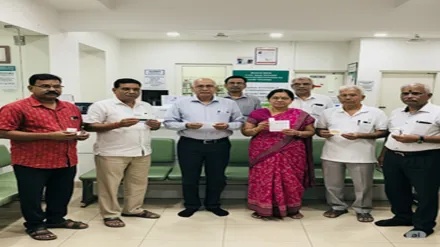
Revamping Healthcare Access for Central Government Employees and Pensioners
The Indian government has launched significant overhauls to the Central Government Health Scheme (CGHS), aimed at improving healthcare accessibility for millions of central government employees and pensioners. These reforms address long-standing issues such as delayed medicine supply and lack of transparency, ensuring timely medical care for beneficiaries, particularly senior citizens. By integrating digital solutions and streamlining procurement processes, the government seeks to modernize the healthcare system and enhance service quality. The recent reforms mark a pivotal shift toward a more responsive and efficient healthcare framework for those who rely on CGHS for medical support.
Addressing Medicine Supply Delays Through Digital Innovation
A critical challenge faced by CGHS beneficiaries has been the prolonged delays in receiving essential medicines, especially in wellness centers across major cities. In response to parliamentary inquiries and public feedback, the Ministry of Health has implemented a cutting-edge software solution developed by C-DAC. This digital platform tracks demand trends, monitors procurement cycles, and ensures faster delivery of medicines to wellness centers. The initiative not only reduces bureaucratic hurdles but also introduces transparency, allowing beneficiaries to access timely medical supplies. The government has also established strict timelines for medicine distribution, with routine drugs arriving every 35 days in Delhi-NCR and restricted medications delivered within 3-4 working days.
Enhancing Transparency and Timeliness in Healthcare Services
Recent reforms have focused on making CGHS operations more transparent and efficient. The new software application enables real-time tracking of medicine procurement and supply chains, minimizing delays and ensuring accountability. Additionally, the government has mandated that local chemists deliver unavailable medicines to beneficiaries within 48 hours, with penalties for non-compliance. These measures aim to eliminate bottlenecks in the supply chain and ensure that senior citizens and other vulnerable groups receive uninterrupted healthcare. The reforms also include expanding the list of private hospitals on the CGHS panel, offering beneficiaries greater choice in medical treatment options.
Expanding Digital Health Solutions for Better Care
The government has introduced digital health cards to simplify documentation and streamline access to medical services for CGHS beneficiaries. These cards enable seamless availing of treatment and reduce administrative burdens. Furthermore, tele-consultation services have been expanded, allowing senior citizens to consult specialists from the comfort of their homes. These digital innovations reflect a broader effort to modernize healthcare delivery and improve accessibility for those who depend on CGHS. By leveraging technology, the government aims to create a more responsive and user-friendly healthcare system for central government employees and pensioners.
Comprehensive Reforms for a Sustainable Healthcare Framework
Over the past year, the government has implemented a series of reforms to strengthen the CGHS framework. These include refining procurement processes, introducing performance-based penalties, and enhancing transparency in service delivery. The reforms also emphasize the importance of stakeholder feedback, with adjustments made to CGHS rates and procedures based on beneficiary suggestions. By prioritizing timely medicine supply, reducing bureaucratic delays, and expanding digital health services, the government is working to create a more equitable and efficient healthcare system. These changes underscore the commitment to improving the quality of life for central government employees and pensioners through better healthcare access and support.




